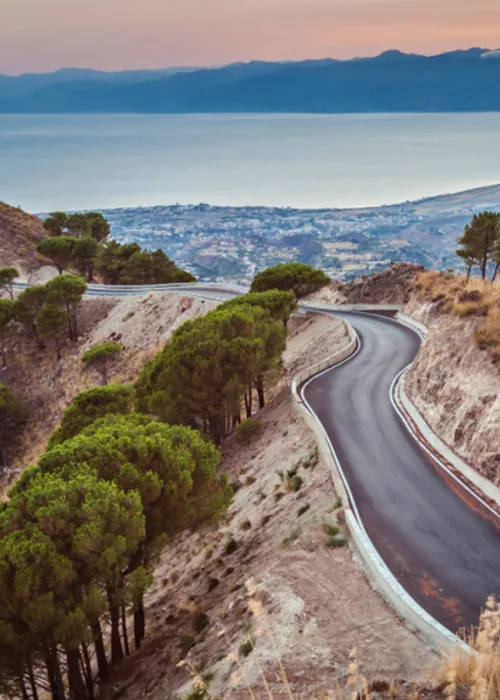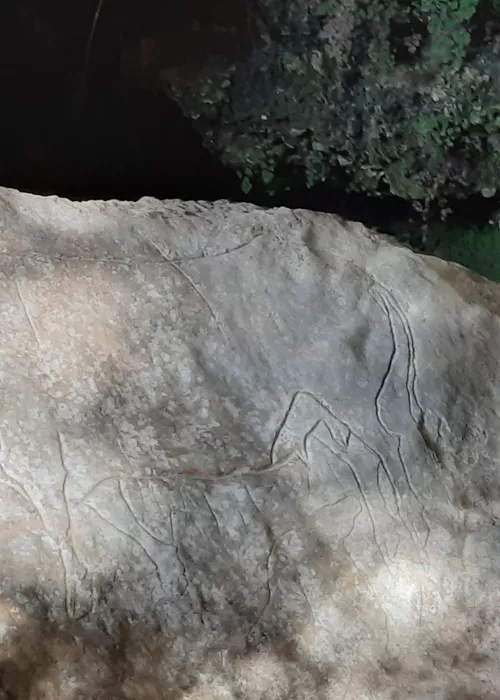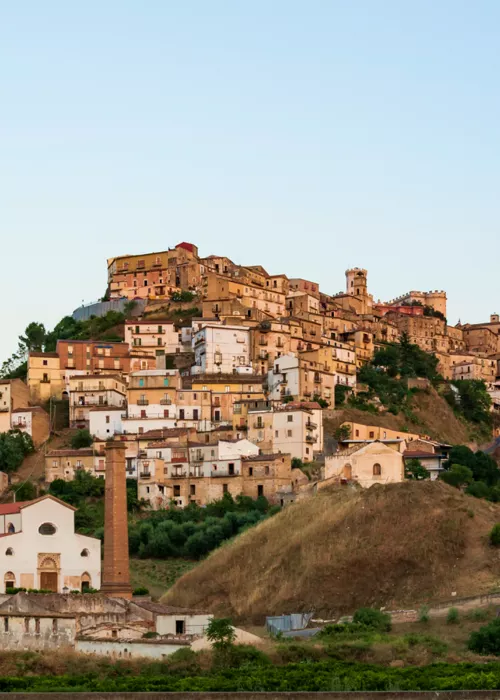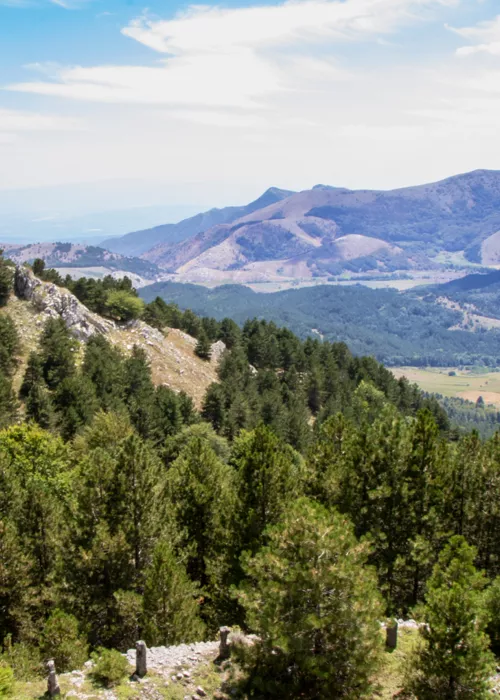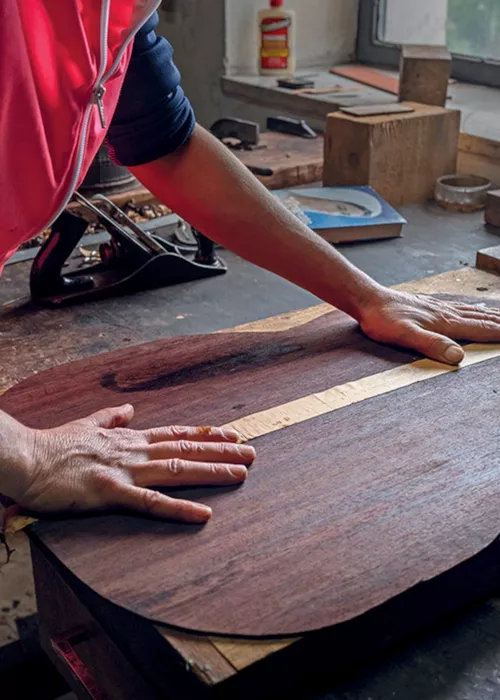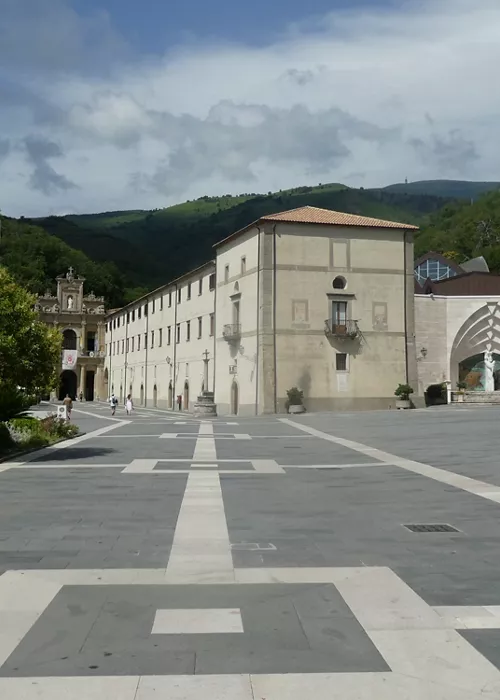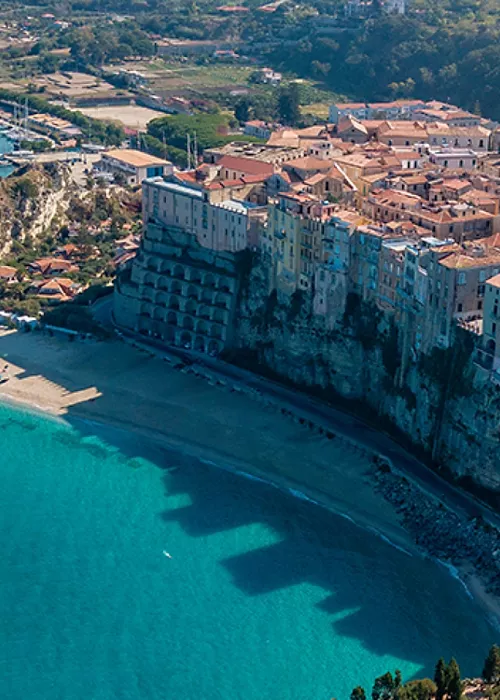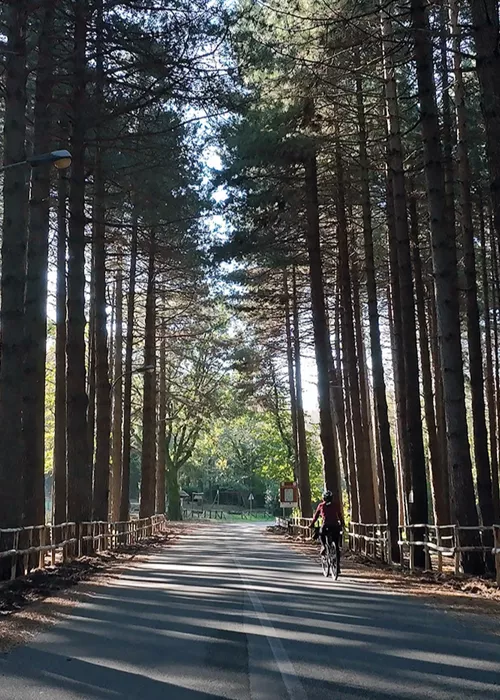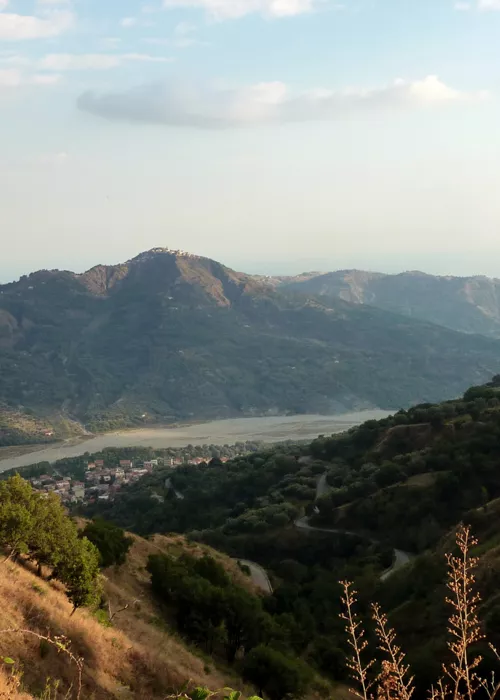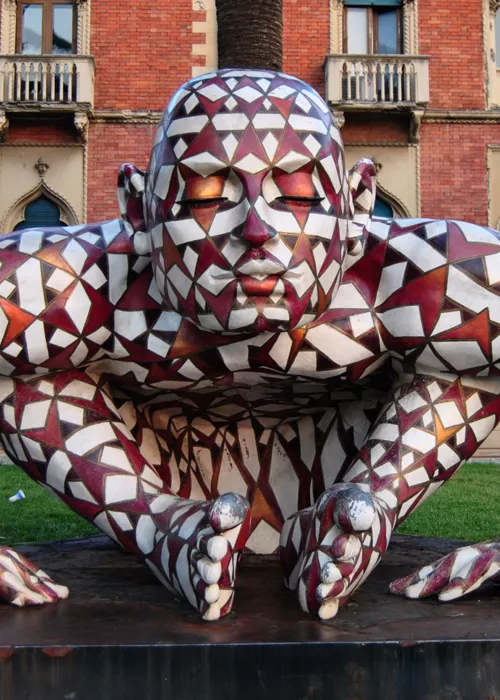Luzzi: center of mystical charm and homeland of San Vito DOC

We start our journey from Luzzi, a small village in the province of Cosenza, immersed in the verdant Crati Valley. Legend has it that the town was built on the remains of the ancient Thebae Lucane, a town in Magna Graecia dating back to the 4th century BC.
In Luzzi it is worth visiting some religious buildings, such as the medieval Church of Sant'Angelo, rich in nineteenth-century paintings and custodian of a work of the school of Leonardo da Vinci, or the painting of Santa Maria delle Grazie. The Abbey of Santa Maria della Sambucina also deserves a stop: erected around the middle of the twelfth century by the Cistercian monks, it is an important religious, artistic and cultural center. From the monks themselves comes an excellent product: San Vito, a wine that has obtained Doc recognition and is produced in the variety of red, pink and white.
Makes: the Borgo dei Musei e del Savuto DOC

The route continues 26 kilometers ahead, towards Rende, center of the urban area of Cosenza and home to the largest Italian university campus, the University of Calabria. The locality runs along the course of the river Crati and extends to the Serre Cosentine.
The historic center is undoubtedly striking, so rich in art galleries to assign to Rende the nickname of "Borgo dei Musei". The structure of the town is also peculiar, which, between churches and noble palaces with carved portals and wrought iron balconies, preserves almost unchanged the medieval urbanism and the name of the squares and streets. Think of the central Piazza degli Heroi or the Porta di Cosenza or Giudecca.
In Rende you can sip another Calabrian masterpiece, the Savuto Doc, a wine that takes its name from the Savuto River, ruby red, dry on the palate and intense on the nose.
Cosenza: the City of Bruzi and Donnici DOC

The Wine and Flavors Route arrives, after 10 kilometers, in Cosenza, City of Bruzi because this is where the ancient population settled. The capital is located at the confluence with the Busento River, on the seven hills of the Crati Valley.
The old town retains the medieval atmosphere of the past, with its monumental buildings, narrow and winding alleys, churches and manor buildings, architectures that make the historic center of Cosenza among the most beautiful and ancient of the entire Peninsula.
Here, you can taste a fine wine, excellent to accompany the fish and light appetizers and which is produced in the homonymous fraction: the Donnici Doc, in its versions of red, pink and white.
The Land of the Copper Craftsmen

We conclude our journey with a final stop. After 11 kilometers, we arrive at Dipignano, a town in the upper Crati Valley, which extends on the ridge of the Apennine chain Paolana. A destination of historical and artistic interest, it impresses visitors both for its varied landscape, which alternates gentle slopes with rocky overhangs, and for the so-called forgitelle scattered throughout the center, rudimentary stoves with which the artisans worked the tableware.
Dipignano is also known for the excellence of the copper masters and is configured, not surprisingly, as the village of ancient crafts.
Also in this Calabrian center there are religious structures that are worth visiting, first of all the Church of Ecce Homo, with its splendid facade in Gothic-Roman style.
Dulcis in fundo, the ovens of Dipignano, known for the production of the classic sponge cake.




